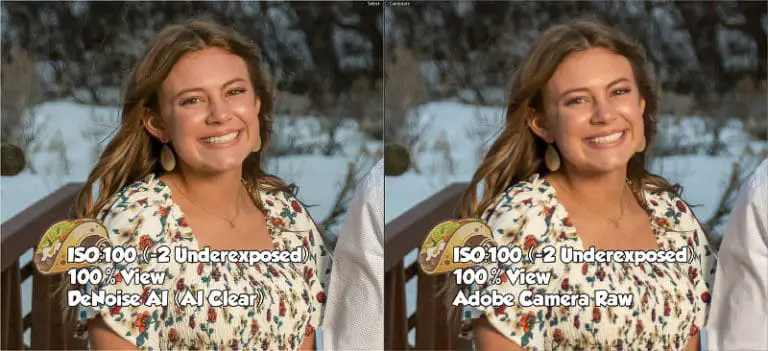
- #TOPAZ SHARPEN AI VS DENOISE AI FULL#
- #TOPAZ SHARPEN AI VS DENOISE AI SOFTWARE#
- #TOPAZ SHARPEN AI VS DENOISE AI ISO#
- #TOPAZ SHARPEN AI VS DENOISE AI SERIES#
Second, does the order of operation matter? That is, is it better to do color and exposure adjustments in Lightroom (or Camera Raw or Photoshop) and then take the file over to Denoise AI or is it better to take the unaltered RAW file straight to Denoise AI and then head back to Lightroom (or Photoshop if that’s your bag) for further processing?

#TOPAZ SHARPEN AI VS DENOISE AI SERIES#
I used these questions to frame the review and then chose a series of photos to help provide answers.įirst, would Topaz Denoise AI manage the luminance and color noise inherent in night landscape photos better than I could do with my normal Lightroom workflow? I hoped that Denoise AI would do a great job in removing noise on starry skies and foregrounds without wiping out too much detail. I had four questions regarding Topaz Denoise AI and Sharpen AI for night landscape photography. If you are also into bird and wildlife photography as I am, please check out my blog and video review of Topaz Denoise AI and Sharpen AI for those purposes. The longer the exposure, and the higher the outside temperature, the more our sensor will heat up and the more color noise our image will have. And color noise tends to be a product of long exposures as our camera sensors heat up over time.
#TOPAZ SHARPEN AI VS DENOISE AI ISO#
ISO settings of 1600 to 6400 are common for night landscapes. In general, luminance noise is a result of using high ISO values.
While different cameras handle noise differently, nocturnal landscapes tend to suffer from heavy doses of both luminance and color noise. Since landscape photography is one of my main passions, I wanted to investigate whether and how Topaz Denoise AI and Sharpen AI could help for nocturnal landscapes.
#TOPAZ SHARPEN AI VS DENOISE AI SOFTWARE#
So, with the considerable hype surrounding the new Topaz AI suite of products, I was intrigued when Topaz asked me to download the software and try it out. That said, I’m certainly all for any software that can give me the best result possible for my photos. So, I never really want to like a plugin too much! Plugins can also be a pain in terms of keeping them updated and working with our core programs. I’ll also admit that I’m not a fan of plugins generally as I prefer to keep a tidy, self-contained Lightroom workflow based on my RAW file as my master. At the same time, I am not a fanboy in terms of photo gear or photo software, and I always try to provide honest reviews of the products that interest me.

I admire the software they make and their initiative in trying to push the envelope in terms of photo editing plugins. Combining the DeNoise AI and then the Sharpen AI seems to produce the best effect, imho.Ĭlick on image and it might open in browser larger so you can see the noise better, at least with Firefox here it does.I have been a Topaz affiliate for years, and I’ve even done some web content in collaboration with them. Best I could get is one below (2nd) for the Sharpen AI one.ĭeNoise AI alone fixed a lot of the sky, but the tower wasn't sharp (3rd). The grain in the sky is very apparent in the TIFF and Sharpen AI even though Sharpen AI has a Noise reduction feature but it isn't enough nor does it handle it well no matter how long I played with it. 2.3.6), and last one going from TIFF to DeNoise AI to Sharpen AI. 2.2.2), third using only Topaz DeNoise AI (Ver. The below is maybe a 400% blow-up of a cell tower in the distance where you can see the noise/grain from the TIFF made from Exposure X6 since it can do the old Minolta Dimage 7 RAW file to TIFF conversion.įrom left to right is the TIFF from Exposure X6, second one using just Topaz Sharpen AI (Ver. However, it is noisy or grainy as heck SOC.

#TOPAZ SHARPEN AI VS DENOISE AI FULL#
Since the camera is only 5.2MP (Circa 2001) and I'm doing the IR thing, I may be only using the red pixel out of the RGBG2 grouping - and maybe some residual feeding the BGG2 pixels too since the IR isn't a full IR as I can see some light through it (Cheap $15 filter.). I've been shooting an old Dimage 7 along with an IR filter looking to get the light foliage and darker sky in B&W.


 0 kommentar(er)
0 kommentar(er)
